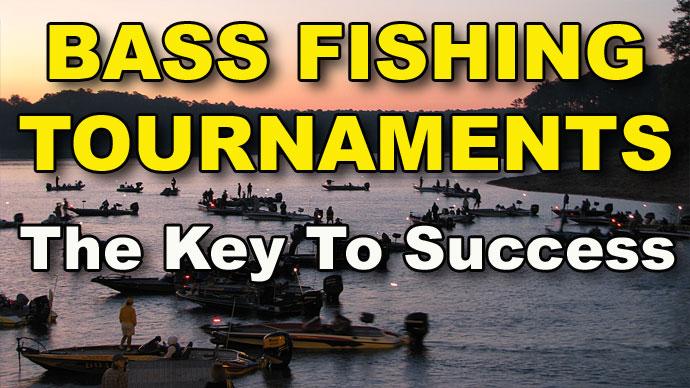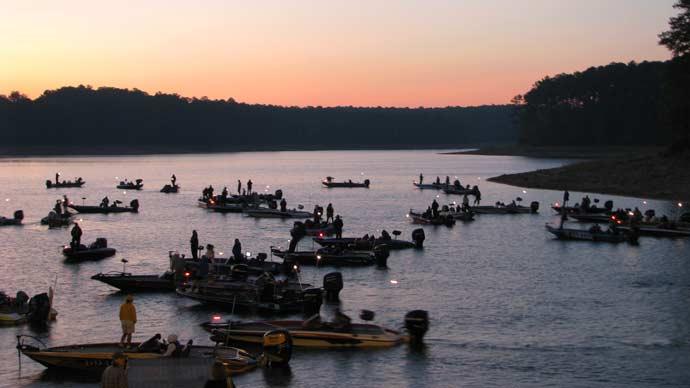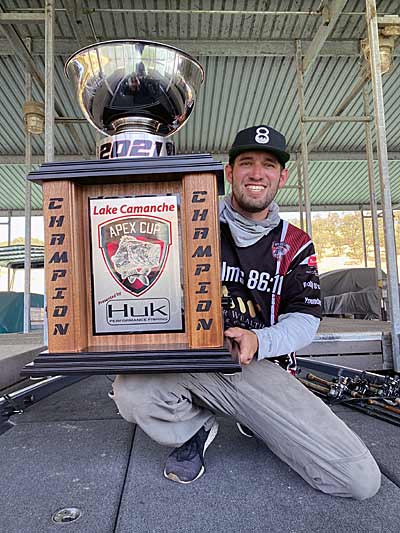
Phillip Dutra cut his bass fishing teeth on the California Delta, where he was born and raised, but he is not a one-lake wonder. Dutra recently won the Wild West Bass Apex tournament on Camanche Lake and finished in the top ten for AOY in the Wild West Pro-Ams in 2020. The Apex tour is a whole new game in the west, which is good news for anglers who can’t afford to drive back east for the big tournaments.
Here’s how the Apex works. The Apex tour is fished by invitation only, and the way to get an invitation is to qualify through the four Wild West Bass tournaments. The best three out of four finishes count toward your AOY points. The first year there were 35 invitations issued, and 33 of those anglers are fishing the Apex events. The other two had fishing commitments that wouldn’t allow them to do Apex.
The Apex tournaments are held on lakes that aren’t the usual tournament lakes for Wild West, and there is a 30-day off limits during which you are not even allowed to talk to anyone about the lake. You get zero practice. On the first day, the anglers can drive around for thirty minutes and look at the lake, but not fish – just a quick look around and back to the ramp.
There are no co-anglers, and each angler uses the TourneyX system, so there are live, real-time standings up. Phillip says that each angler has a measuring board and they measure and photograph each fish, then give their best estimate of how much the fish weighs. Everyone fishes on days one and two, and you bring your five best fish to the scales for weigh-in. There are two sessions (so two weigh-ins) on day one, meaning you can bring ten fish to the scales day one. On day two, there is just one session.
There are two ways to make the cut to fish on day three. The first way is to have the highest number of fish for the two days, and the second is the highest weight total for the three weigh-ins. Five anglers qualify in those two categories, so ten anglers battle it out on day three. All the weights are re-set to zero, so day three is a clean slate for everyone. There are cameras all over, and the Apex series will be televised on the Pursuit Channel this September. The live TourneyX stats, no-net rules, and ubiquitous cameras should make for some exciting television.
The Apex Tour plan is to help promote bass fishing in the West and ultimately to have a professional tour out west for anglers who can’t or won’t go back east to compete on the highest levels. They plan to increase the invitations yearly, capping it at around 60 anglers or less. The format of these tournaments means that Dutra’s bass fishing mantra of “Strategy, Versatility, and Execution” was his key to winning on Camanche.
Strategy
Phillip began building his strategy long before he got to Camanche. He knew he’d have thirty minutes to look around the lake, so his strategy started with homework. “There are lots of things you can do from home,” says Dutra, “including looking at maps and Google Earth and researching changes in topography, major channels – things like that.” Another thing is to use previous experience. Ask yourself what bass, in general, do this time of year. Some of that will depend on the type of structure and available cover, so that’s where studying maps come in. Also, research what kind of fish live in the lake. Is it all largemouth, or are there smallmouth bass and spotted bass? You can also research previous tournaments on the lake: who won? Where? Doing what? All of that will help you put a strategy together.
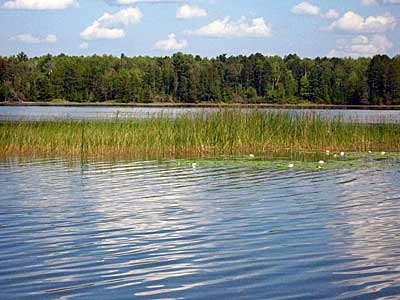
During the 30-minute drive around the lake, he knew he wouldn’t be able to investigate spots thoroughly, so he looked at water color, temperature, and clarity. He looked around at two or three places without even trying to graph them, looking for things like wood, docks, homes, bridges, etc.
When you launch, you have no idea what the day will play out like, and you can follow the TourneyX and see how fast the other guys are catching fish, which increases the pressure on you, but also helps you decide if you need to change your strategy. You need to figure it out quickly, so he moved around and tried many different things until he got that first bite. “The first bite is a clue,” says Dutra, “it tells you how deep they are, how fast they’ll move for a bait, what kind of stuff they’re on, etc.”
Versatility
The first day, Dutra had no bites for the first hour and a half, then he caught a fish on topwater. That fish came off a submerged island top in the main lake in 20 feet of water. He entered the fish on TourneyX and discovered he was pretty high up already, which immediately told him that the fishing was tough. He looked for more areas like that wooded island top, but that bite sizzled out, so he decided he might change things up. This is where versatility comes in: you need to know how to do it all, he says, and feel comfortable with any technique.
He caught fish on seven or eight baits during the first two days, fishing upriver, mainly catching spotted bass. He noticed that most of the fish were in 0 to 20 feet. He fished Ned rigs, drop shots, and a Berkley Cane Walker in the rivers, targeting the 8- to 20-foot depths, looking for bait and schools of spots. He qualified for day three but knew he needed bigger fish, so he decided to stay on the main lake for day three and go after largemouth bass.
“The main lake was a zoo, but I was committed to staying even though I didn’t know where the fish were. I bounced around and caught most of my fish on finesse baits, with the key fish coming on a topwater walking bait.”
His day three strategy was to hit the busiest parts of the main lake from 6:00 to 10:00, so he hit the big body of open water early, then tucked away in a couple of coves behind some islands where he’d get a bit of protection from boat traffic. He tried to isolate himself as much as he could. Near the end of day three, he checked with TourneyX and realized he needed a bigger fish to put himself in first place, so he picked up his big-fish bait: the Berkley Cane Walker. He caught a 3-1/2-pounder half an hour before weigh-in.
Some anglers stuck to power fishing and did well. Some did strictly finesse, and they also did well. Dutra did both.
Ned Rigging
Submerged islands produced a lot of fish for Phillip. “When you know there are fish on the island tops, drop a Ned Rig down there, shake it a little, drag it a little,” he says. “It’s a slow technique, so make sure you know there are fish down there.” He tries to stay far from the fish, so he doesn’t spook them, and he uses a 7-foot medium-heavy Abu Garcia Fantasista spinning rod with a ten to fifteen foot long, 7- to 10-pound fluorocarbon leader tied to braid. He mainly used a Z-Man Shroomz jighead and a Z-Man Big TRD in a color called The Deal. This rig was responsible for several spots he caught during the first two days. “When you’re graphing, look for bait as well as bass,” he recommends, “because that will tell you where you should be looking for the most activity.”
Execution
For Dutra, execution means not just getting bites but also not missing them and not losing the fish before they’re in the boat. “That comes down to your rods, your line, your hooks,” he says. He re-ties a lot and checks his hooks all the time. He even puts new hooks on the most-used baits every day. “There are no shortcuts,” he says, “use the proper rods and check for frays in your line constantly.” You also need to stay focused. “Nobody is perfect, but the guy who catches 95% of his bites will beat a guy who only catches 75% of his bites.” That boils down to attention to details like line, hookset, and preparation. You must be in tune with your bait to detect subtle bites.
Mindset
If you’ve done your homework and research, you shouldn’t get hit with many surprises, so preparation helps calm your mind. Feeling like he has a good grasp on things helps him a lot. He doesn’t obsessively check the score tracker, but when he catches a fish, he looks to see where he is, and if he hasn’t caught a fish in a while, he’ll check it to see if maybe he needs to change strategy. Versatility helps him not spin out because he’s willing and comfortable changing his technique and moving to new areas.
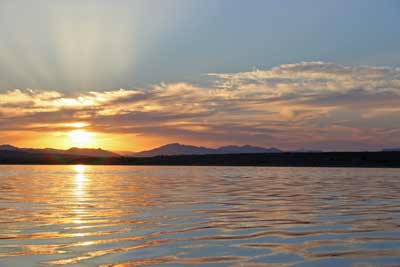
“Listen to your gut,” Dutra says, “be comfortable making changes on the fly – be a quick adjuster.” Also, he says another key is not being negative. Instead of thinking negative thoughts, think about how you can make a positive change. “You’re in it until the last minute,” he says. Everyone wonders how long they should stay on a spot, and Dutra says the answer to that age-old question depends on several factors. For him, it depends on how much activity he’s getting. If all the fish are the same size, he’ll move along after catching maybe five fish. But if his strategy is to catch as many fish as possible to make those numbers, he’ll stay until the bite quits.
Near the end of the third day, he knew he was in second place and needed to add a pound and a half to his total weight, which meant he needed to replace one of his fish with a three-plus. That’s what prompted him to switch baits, and it paid off.
“The Apex Tour is high intensity, high anxiety fishing,” Phillip says, “but very fun – all the guys are saying that it’s just so much fun. With the format, you can decide to go big or catch a bunch to set your game plan. I felt like if I could catch three to five keepers a day, I could qualify for day three.”
Here’s the takeaway: “The more versatile you are, the more fish you can catch. Fish more, practice different techniques, watch YouTube videos, talk to people, attend seminars, read bass fishing articles, then DO it. Confidence is huge in this game,” says Dutra.
BassResource may receive a portion of revenues if you make a purchase using a link above.



